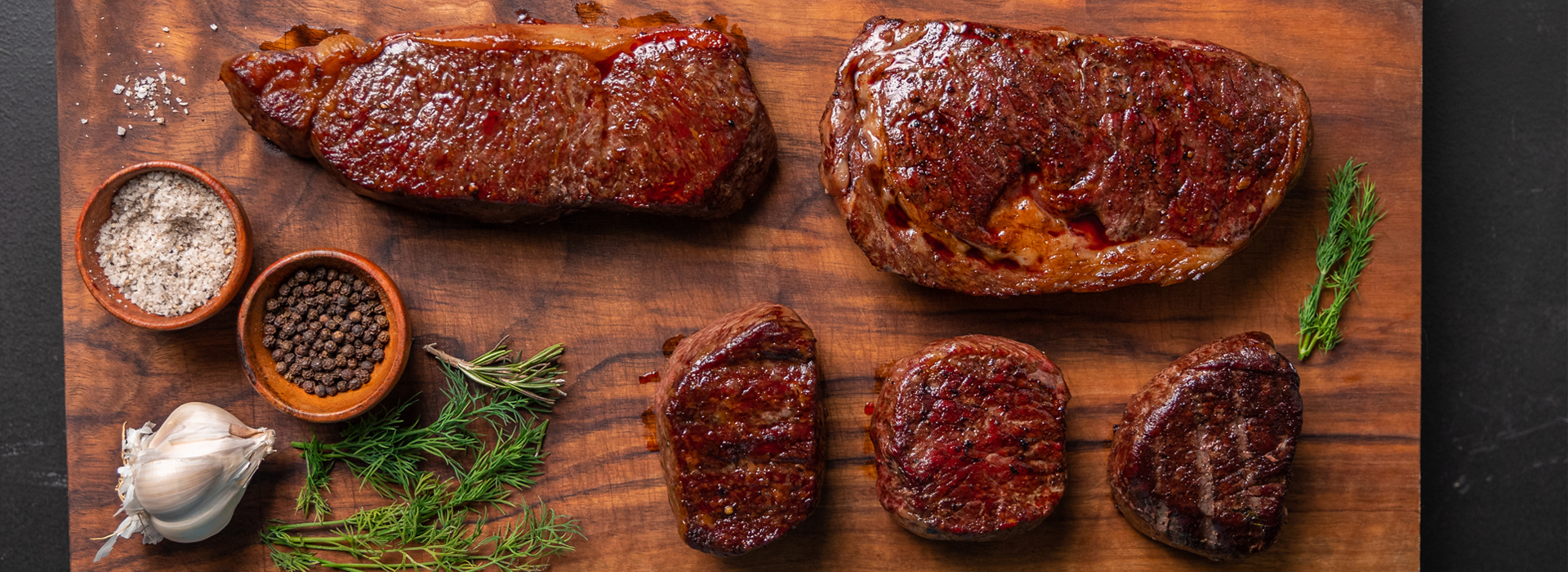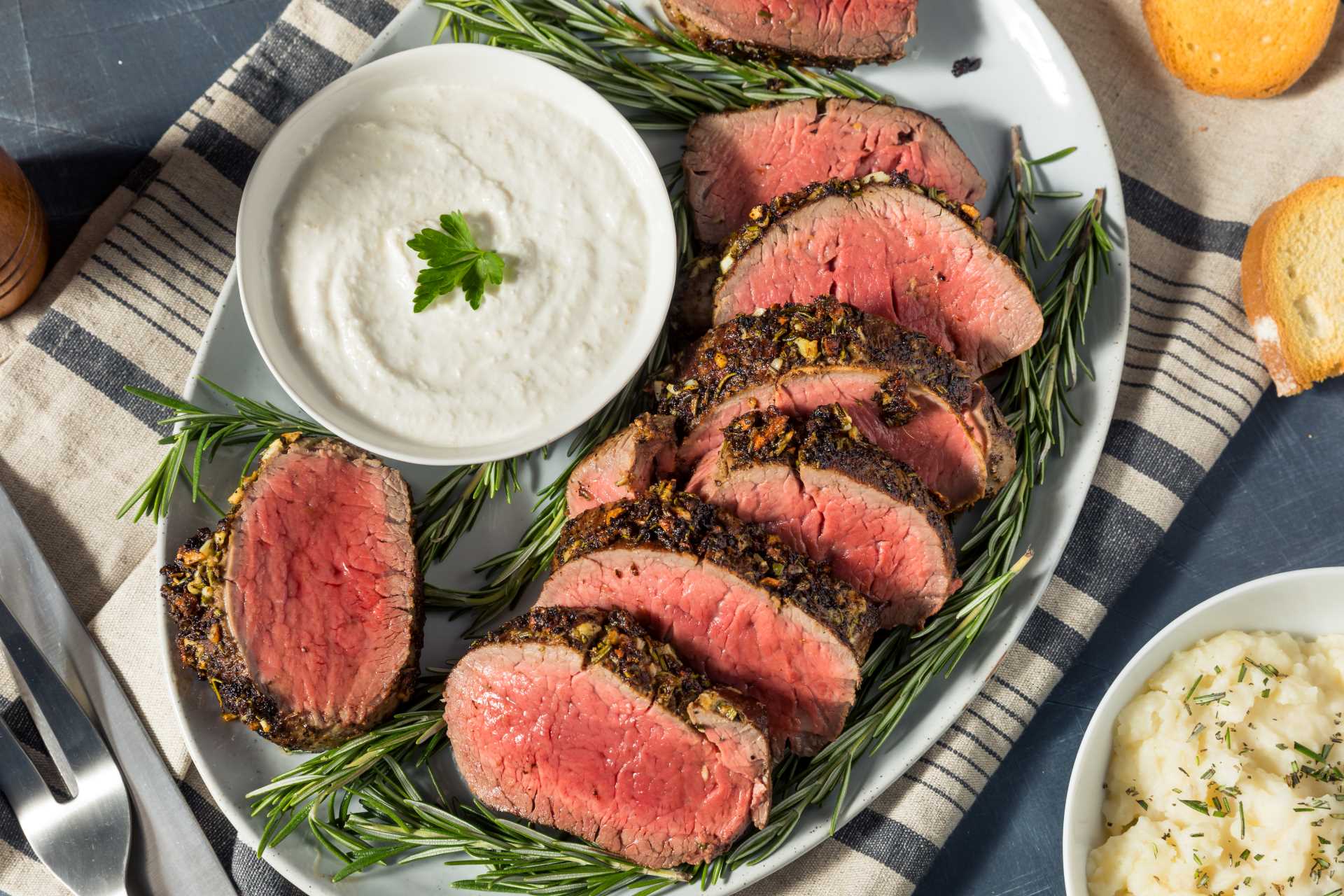Introduction

In the world of beef cuts, two popular choices stand out: Beef Tenderloin and Ribeye. When it comes to choosing between these two cuts, there are several factors to consider, such as taste preferences, cooking methods, and nutritional value. While the Tenderloin is known for its tenderness and lean meat, the Ribeye offers a higher fat content and marbling, resulting in a richer flavor. In this article, we will explore the key traits, cooking techniques, and flavor profiles of these two cuts to help you make an informed decision based on your personal preferences and culinary needs.
What To Consider When Choosing Between Beef Tenderloin And Ribeye
When deciding between Beef Tenderloin and Ribeye, there are several factors to consider. Firstly, think about your personal preferences for taste and texture. If you prefer a leaner and more tender cut, then Beef Tenderloin may be the better choice for you. However, if you enjoy a richer flavor with a higher fat content, the Ribeye is the way to go. Additionally, consider the cooking method you plan to use. Beef Tenderloin is great for quick searing or roasting, while the marbling in Ribeye makes it ideal for grilling or pan-searing. Finally, consider the occasion and your budget. Beef Tenderloin is often considered a more upscale cut and may be pricier, while Ribeye is a more versatile option that fits various budgets. Ultimately, the decision comes down to personal preference and the desired outcome of your dish.
Nutritional Differences Between Beef Tenderloin And Ribeye
When it comes to the nutritional content of Beef Tenderloin and Ribeye, there are some notable differences. Beef Tenderloin is a leaner cut, with less fat and fewer calories compared to Ribeye. It is also lower in saturated fat and cholesterol. On the other hand, Ribeye has a higher fat content, which contributes to its richer flavor but also makes it higher in calories and saturated fat. Both cuts are excellent sources of protein, iron, and other essential nutrients. Ultimately, the choice between Beef Tenderloin and Ribeye will depend on your dietary preferences and health goals.
Beef Tenderloin Overview

Beef Tenderloin is a highly prized cut of meat that comes from the psoas major muscle of the cow. It is known for its exceptional tenderness and mild flavor. This long and cylindrical muscle runs along the spine and does very little work, resulting in a lean and tender meat. Beef Tenderloin is often considered the most tender cut of beef and is commonly used to make filet mignon. It is versatile and can be cooked using various methods such as grilling, roasting, or pan-searing. Its tenderness and delicate flavor make it a popular choice for special occasions and fine dining experiences.
Beef Tenderloin: Cut, Flavor Profile, And Cooking Methods
Beef Tenderloin, derived from the psoas major muscle of the cow, is a highly prized cut known for its exceptional tenderness and mild flavor. This long and cylindrical muscle runs along the spine and does very little work, resulting in a lean and tender meat. It is often used to make filet mignon. The flavor profile of beef tenderloin is delicate and subtle, making it a versatile option for various dishes. It can be cooked using different methods such as grilling, roasting, or pan-searing, allowing for a range of culinary creations. Its tenderness and delicate flavor make it popular for special occasions and fine dining experiences.
Benefits Of Choosing Beef Tenderloin For Different Dishes
Beef tenderloin offers several benefits when used in different dishes. Firstly, its exceptional tenderness makes it ideal for dishes that require a melt-in-your-mouth texture. Whether it’s a classic filet mignon, beef wellington, or stir-fry, beef tenderloin delivers a tender bite every time. Additionally, its delicate flavor profile allows it to complement a wide range of ingredients and seasonings without overpowering them. This versatility makes beef tenderloin suitable for both simple and complex dishes, from elegant steak dinners to flavorful beef stews. Its tender and mild qualities make it a go-to choice for special occasions and fine dining experiences.
Ribeye Overview

The Ribeye, also known as the rib steak, is a popular beef cut known for its rich flavor and tender texture. It is cut from the rib section of the cow, specifically from the rib primal cut. This area of the cow is well-exercised, resulting in a higher fat content and marbling throughout the meat. The marbling contributes to the Ribeye’s juiciness and enhances its robust beefy flavor. It is often preferred by steak enthusiasts who appreciate the melt-in-your-mouth experience and the intense taste that comes with the higher fat content.
Ribeye: Cut, Marbling, And Cooking Recommendations
The Ribeye steak is cut from the rib section of the cow, specifically from the rib primal cut. It is known for its rich marbling, which refers to the fat interspersed throughout the meat. This marbling gives the Ribeye its tender texture and enhances its flavor. When cooking Ribeye, it is recommended to use high-heat methods such as grilling or searing to bring out the natural juiciness and create a delicious crust. The higher fat content allows the Ribeye to retain its moisture during cooking, resulting in a succulent and flavorful steak.
Advantages Of Ribeye Steak In Different Culinary Uses
When it comes to culinary uses, Ribeye steak has several advantages that make it a popular choice among chefs and home cooks alike. Its rich marbling and high-fat content create a tender and flavorful steak, making it perfect for grilling, searing, or even pan-frying. The intense flavor of the Ribeye can stand up to bold seasonings and sauces, making it a great choice for dishes like steak fajitas or steak salads. Additionally, the Ribeye’s juicy and succulent texture makes it an excellent option for steak sandwiches or as the star ingredient in a hearty stew. Overall, the versatility and deliciousness of Ribeye steak make it a go-to option for various culinary creations.
Flavor And Texture Comparison

When comparing the flavor and texture of beef tenderloin and ribeye, it is important to consider their distinct characteristics. The beef tenderloin, also known as filet mignon, is prized for its delicate, melt-in-your-mouth texture and subtle, mild flavor. On the other hand, the ribeye is known for its rich marbling, which enhances its juiciness and imparts a bold, robust flavor. The ribeye’s generous fat content contributes to its tender and succulent texture. Whether you prefer a tender, subtle steak or a bold, flavorful bite, the choice between beef tenderloin and ribeye ultimately comes down to personal preference.
Comparing The Flavor Profiles And Textures Of Beef Tenderloin And Ribeye
When comparing the flavor and texture of beef tenderloin and ribeye, it is important to consider their distinct characteristics. The beef tenderloin, also known as filet mignon, is prized for its delicate, melt-in-your-mouth texture and subtle, mild flavor. On the other hand, the ribeye is known for its rich marbling, which enhances its juiciness and imparts a bold, robust flavor. The ribeye’s generous fat content contributes to its tender and succulent texture. Whether you prefer a tender, subtle steak or a bold, flavorful bite, the choice between beef tenderloin and ribeye ultimately comes down to personal preference.
Factors Impacting The Taste And Tenderness Of Each Beef Cut
Several factors impact the taste and tenderness of beef cuts like tenderloin and ribeye. First, the location of the muscle affects tenderness, as the tenderloin is found in a less-exercised area, resulting in a more tender texture. In contrast, the ribeye comes from a more active muscle, which can make it slightly less tender. Marbling, or the distribution of fat within the muscle fibers, also plays a role in tenderness and flavor. Ribeye’s higher fat content and marbling contribute to its juiciness and bold flavor, while tenderloin’s lower fat content gives it a milder taste and tender texture.
Cooking Techniques

When it comes to cooking beef tenderloin and ribeye steaks, there are a few techniques that will help you achieve the best results. For beef tenderloin, it is recommended to use dry heat cooking methods like grilling, broiling, or pan-searing to preserve its tenderness and delicate flavor. Searing the tenderloin on high heat and then finishing it in the oven can create a delicious crust while keeping the center juicy and tender. On the other hand, ribeye steaks have enough marbling to make them perfect for grilling or pan-searing. The high-fat content adds flavor and ensures a juicy steak. Regardless of the cooking technique, it’s important to let the meat rest for a few minutes before serving to allow the juices to redistribute for a perfect steak-eating experience.
Best Cooking Methods For Beef Tenderloin And Ribeye Steaks
Both beef tenderloin and ribeye steaks can be cooked using various methods to bring out their best flavors and textures. For beef tenderloin, it is recommended to use dry heat cooking techniques such as grilling, broiling, or pan-searing. These methods help preserve its tenderness and delicate flavor. Searing the tenderloin on high heat and then finishing it in the oven can create a delicious crust while keeping the center juicy and tender. On the other hand, ribeye steaks are perfect for grilling or pan-searing due to their high-fat content, which adds flavor and ensures a juicy steak. Regardless of the cooking technique, allowing the steaks to rest for a few minutes before serving allows the juices to redistribute for a perfect steak-eating experience.
Tips For Achieving The Perfect Doneness For Each Cut
When cooking beef tenderloin or ribeye steaks, achieving the perfect doneness is crucial to ensure the best flavor and texture. For beef tenderloin, it is recommended to cook it to medium-rare or medium to maintain its tenderness and juiciness. This can be achieved by using a meat thermometer and cooking the tenderloin to an internal temperature of 135-145°F (57-63°C). On the other hand, ribeye steaks can be cooked to medium or medium-well, with an internal temperature of 145-160°F (63-71°C) to ensure the fat marbling melts and enhances the flavor. Monitoring the cooking time and using a meat thermometer will help achieve the desired doneness for each cut.
Conclusion

In conclusion, choosing between beef tenderloin and ribeye ultimately depends on personal preference and the occasion. Beef tenderloin offers a tender and lean cut with a subtle flavor, making it ideal for special occasions and those who appreciate a milder taste. On the other hand, ribeye steak boasts intense flavor and juicy marbling, perfect for steak lovers who crave a robust and rich eating experience. Whether you’re aiming for tenderness or boldness, both cuts have their own unique qualities that can satisfy any steak connoisseur.
Final Thoughts On Choosing Between Beef Tenderloin And Ribeye
In conclusion, choosing between beef tenderloin and ribeye ultimately depends on personal preference and the occasion. Both cuts have their own unique qualities that can satisfy any steak connoisseur. Beef tenderloin offers a tender and lean cut with a subtle flavor, making it ideal for special occasions and those who appreciate a milder taste. On the other hand, ribeye steak boasts intense flavor and juicy marbling, perfect for steak lovers who crave a robust and rich eating experience. Whether you’re aiming for tenderness or boldness, both cuts have their own appeal and can be enjoyed in various culinary preparations.
Which Beef Cut Is Better Suited For Different Occasions And Preferences
When it comes to choosing between beef tenderloin and ribeye, the better-suited cut depends on the occasion and personal preferences. If you’re looking for a luxurious and elegant meal for a special occasion, beef tenderloin is a great choice. Its lean and tender texture, coupled with a subtle flavor, creates an exquisite dining experience. On the other hand, if you’re a fan of bold and intense flavors, ribeye steak is the way to go. Its marbling and robust taste make it perfect for those who crave a rich and satisfying steak. Ultimately, the decision between the two cuts comes down to individual taste and the desired dining experience.
FAQ About Beef Tenderloin Vs Ribeye: Beef Cut Choices
Q: What is the main difference between Beef Tenderloin and Ribeye cuts?
A: The main difference lies in the tenderness and flavor profile. Beef Tenderloin is known for its extremely tender texture, whereas Ribeye has a rich, flavorful taste due to its marbling.
Q: Which cut is more expensive, Beef Tenderloin, or Ribeye?
A: Beef Tenderloin is generally more expensive than Ribeye due to its tenderness and limited availability.
Q: How should Beef Tenderloin and Ribeye be cooked to bring out their best flavors?
A: Beef Tenderloin is best cooked quickly at high heat, such as grilling or pan-searing, to retain its tenderness. Ribeye benefits from high-heat cooking methods like grilling or broiling to enhance its flavor from fat marbling.
Q: Can Beef Tenderloin and Ribeye be used interchangeably in recipes?
A: While they both are delicious cuts of beef, Beef Tenderloin and Ribeye have unique qualities that make them better suited for different recipes. It’s best to choose the cut that aligns with the cooking method and flavor profile you desire.
Q: Are Beef Tenderloin and Ribeye healthy choices?
A: Both cuts of beef are good sources of protein and various nutrients. Beef Tenderloin is known for being leaner, while Ribeye is more marbled with fat. Moderation and balance are key to enjoying these cuts as part of a healthy diet.
Q: How should someone decide between Beef Tenderloin and Ribeye when shopping for beef?
A: The choice between Beef Tenderloin and Ribeye comes down to personal preference in terms of tenderness, flavor, and budget. Consider how you plan to cook the meat and what type of eating experience you desire to make the best selection.

Salsas by Karoll’s Catering is a vibrant and innovative Canadian fusion family restaurant that welcomes you to indulge in a delightful culinary experience. Every Sunday, from 11 am to 2 pm, we invite you for a delicious brunch that will tantalize your taste buds. Whether you prefer dining in or taking out, we ensure that our delectable dishes are available to savour at your convenience. In addition to our enticing Sunday brunch, we host a lively happy hour every Thursday, Friday, and Saturday. During this time, you can enjoy discounted food items, get $2.50 off on beer, and sip on refreshing $5 margaritas. It’s the perfect opportunity to unwind and relish in the flavours of our Canadian fusion cuisine.